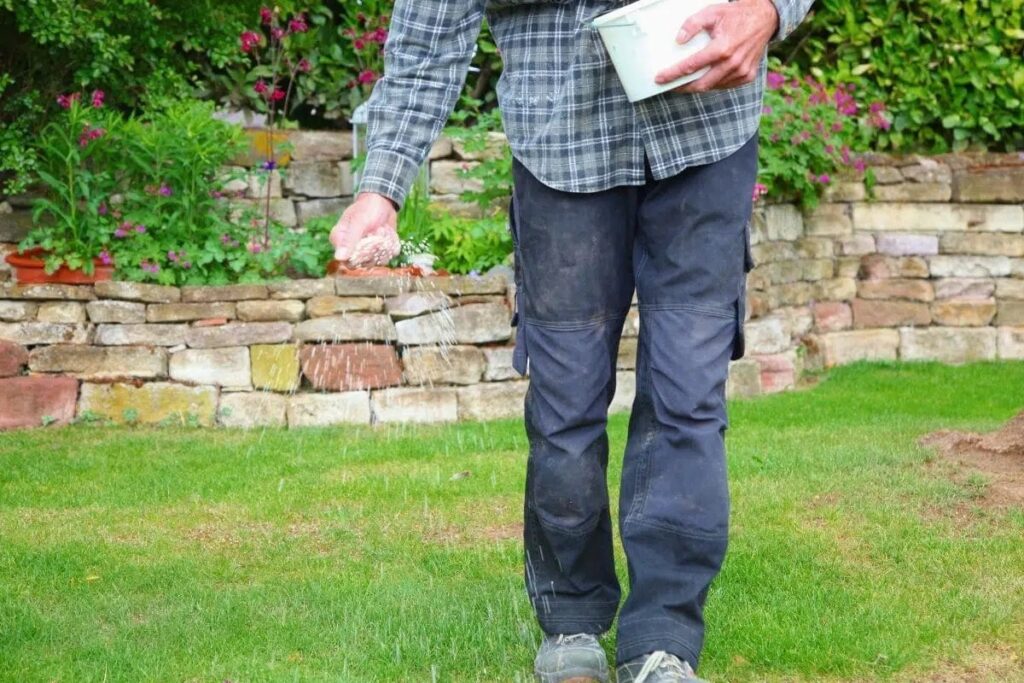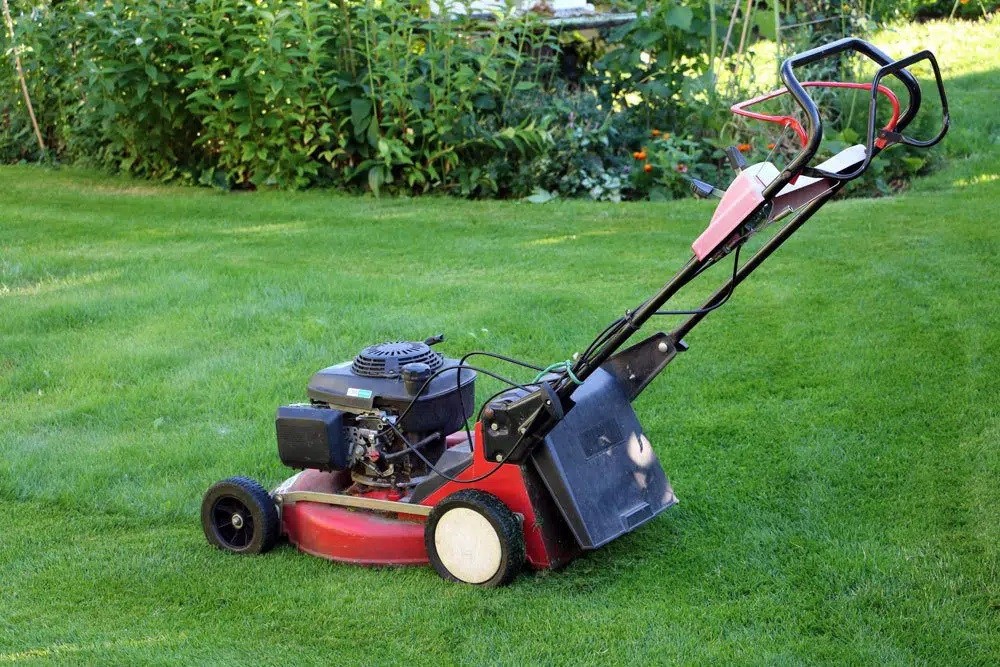Last updated on October 23rd, 2023 at 08:33 pm
A lush green lawn is the pride of many amateur gardeners. But when it gets warmer outside again, yellow spots can be seen in the lawn in many places. These can have various causes.
- yellow spots on the lawn often the result of errors in care.
- main causes are drought, mistakes in fertilization and cutting
- dogs can also be the cause of unsightly spots
- specific measures promote self-healing of the lawn
- sometimes a targeted reseeding is necessary
Contents
Dryness and wetness
Prolonged drought and temperatures beyond the 30 degree mark can take their toll on lawn grasses. They turn yellow and die.
- Degree of damage depends on duration of drought, rooting and cutting height
- natural rainfall is often insufficient
- for salvage first remove cutting residues
- provide sufficient light and air for regeneration
- then irrigate and apply fertilizer
- if this does not help, reseed the lawn
- in the case of more serious drought damage, completely replant the lawn
Excessive watering can also affect turf grass. It does not grow and shows yellow discoloration. Then you should give the soil time to recover. You test the soil moisture and water very cautiously at first. Ideally, it is soaked ten to fifteen centimeters deep.
Fertilizing mistakes
Overfertilization
A common problem is the incorrect use of fertilizer. If there is an oversupply of nutrients, the lawn can hardly absorb any nutrients, it does not grow and turns yellow in places. If overfertilization is present, excess nutrients can be flushed from the soil by watering thoroughly over several days. The fertilizer concentration decreases and the grasses can recover.

Tip: Regardless of the type of fertilizer, you should follow the manufacturer’s dosage recommendations.
Wrong fertilizer
Lawn grasses require a very specific nutrient composition. The most important nutrients are nitrogen, phosphorus and potassium. Nitrogen promotes leaf growth and the formation of chlorophyll, and phosphorus promotes root development. Potassium makes them more resistant to diseases.
Good lawn fertilizers contain exactly these substances in the right proportions. Ideally, you use organic fertilizers instead of mineral ones. They are free of chemical and mineral substances, which also protects the environment. The fertilizing effect sets in somewhat more slowly, but is available in the soil for longer.
Unfavorable soil pH
Yellow lawn spots are not always the result of maintenance errors. Often it is due to the subsoil. Here, even the best home remedies can do nothing.
- pH value of the soil also decisive for the quality of the lawn
- Acidic pH value is particularly problematic
- impairs growth and health of grasses
- value ideally between 5.5 and 6.5
- pH value below 5.5 is acidic
- Raise value to ideal level by liming
- Preliminary scarifying allows lime to take effect better
It can take some time before the first successes are visible. The pH value can be easily determined with appropriate tests from the hardware store.
Tip: For a more precise soil analysis, you can also have your soil samples evaluated in a specialized agricultural laboratory.
Mowing mistakes
Mowed too early
After a long winter, grasses are battered by cold temperatures and snow that has been on them for a long time. Now they should be given time to regain strength and get used to warmer temperatures.
If this process is interrupted by mowing too early, yellow discoloration can be the result and the grass will not grow. In spite of everything, residual leaves, dead or stuck grasses should be removed with a rake in early spring. The first cut should be made as soon as the grasses have reached twice the desired cutting height, about April.
Tip: If possible, fallen leaves should be removed in the fall. This is because lawns need a minimum amount of light even in winter.
Cut too deep

Lawns are often cut too short. This can quickly lead to sunburn, which in turn can cause the grasses to turn yellow.
- the shorter the lawn, the more sensitive the grasses are
- first mowing at the beginning of the growing season
- initially leave one to two centimeters longer than normal
- never shorten lawn grasses by more than half in general
- from the third mowing cut down to the usual height
- cutting length between 3.5 and 5 cm recommended
- in dry conditions no more than four centimeters
- never cut the lawn shorter than five centimeters in shady areas
Dog urine turns the lawn yellow
It is not uncommon for dog urine to be responsible for discoloration in lawns. It is quite natural for dogs to mark. However, if this happens on the lawn, it is particularly annoying. What you can do about it is to keep an eye on the dog. As soon as he urinates, flush the affected area with plenty of water to prevent the grasses from dying. Home remedies are not particularly helpful here either. For older patches, the only thing that usually helps is reseeding after removing dead plant material.
Lawn diseases
Red lace disease (Laetisaria fuciformis)
Redtip is characterized by irregular, interlocking yellowish patches. Infection can occur year-round when temperatures are between 15 and 22 degrees with plenty of moisture and nutrient deficiency, most often in summer. A pink fungal tangle can be seen in the leaf tips. The disease is usually easily treatable by applying fertilizer. Nitrogen is the most important factor here.
This helps the grasses to really outgrow the disease. Four to six grams of nitrogen should be applied per square meter. A few days after fertilization, the fungus is usually no longer visible. Infected grasses sprout anew. The use of fungicides is not necessary. As a preventive measure, regular mowing, balanced fertilizing and watering should be carried out.
Leaf spot disease
Due to prolonged moisture, one-sided fertilization, as well as cutting the grass too deep, the grasses are weakened. The lawn does not grow, becomes yellow and susceptible to leaf spot disease. It can occur from spring to fall, favored by temperatures between 10 and 30 degrees. Signs of infestation are whitish-yellow to brownish spots. To control it, scarify the soil, provide adequate aeration, fertilize as needed, and avoid drought and wet conditions.
Dollar spot disease
Dollar spot disease occurs mostly in the summer months when temperatures are above 25 degrees and nights are cool with dew. It manifests itself in sharply defined bright spots. These can grow to more than 10 cm in size over time. Necessary measures to remedy the situation are balanced fertilization and watering. Also, ensure good soil permeability and avoid drought stress.


